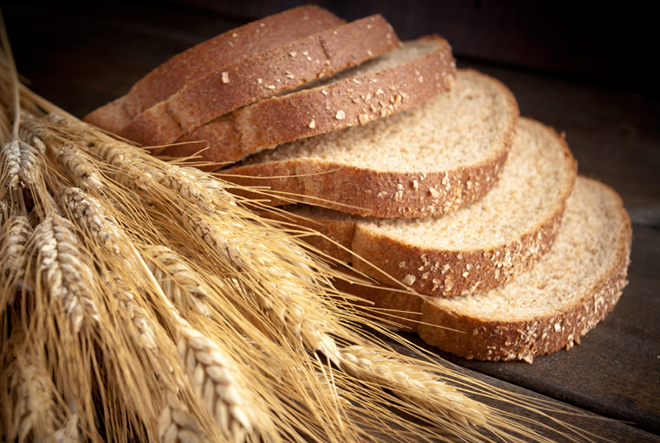Most of the time I post recipes, but occasionally I will post about food sensitivity or nutrition related topics. I came across an interesting article about non-celiac gluten sensitivity in Scientific American recently and want to pass it on. Great magazine by the way for anyone interested in the advances of science – very balanced, well researched and authoritative. The feature articles are always written by researchers at the forefront of their fields in a way that is engaging and understandable even if you don’t have a scientific background. My husband and I have subscribed for many years and always find it fascinating.
He alerted me to this particular news piece: “The Trouble with Gluten” by science writer and editor Roxanne Khamsi.1 She explores how scientists are beginning to suspect that molecules other than “gluten” in wheat and other grains may play a role in the symptoms of gluten sensitivity (as opposed to Celiac disease).
Approximately 1% of the people in the US are known to have Celiac disease, but it is thought that 6 times as many may suffer from what is known as non-celiac gluten sensitivity. Such people do not have high levels of the antibodies in their blood that are typical of Celiac disease and do not suffer the same intestinal damage. However, eating gluten-containing grains does usually cause them gastrointestinal (GI) discomfort. According to a collaborative article written by several of the top Celiac disease researchers, people with gluten sensitivity are more likely to report non-GI symptoms including behavioral changes, “foggy mind”, bone or joint pain, muscle cramps, leg, arm or finger numbness, weight loss and chronic fatigue than those with Celiac disease.2
Because people with these sorts of symptoms often get relief from going on a gluten-free diet, the term non-celiac gluten sensitivity has been coined to describe the condition. But recent studies indicate that other proteins in wheat may be able to incite inflammation. Some suspect wheat proteins are amylase-trypsin inhibitors, which are resistant to digestion in the intestine, and wheat germ agglutinin.
Byproducts of gluten might also cause problems. During digestion, gluten proteins break down into shorter peptides (chains of amino acids) that may act as opioids, binding to receptors in the nervous and GI systems. Morphine and opium are well known examples of opioids. Dr. Aristo Vojdani of Immunosciences Lab suggested that these peptides might explain some of the lethargy that gluten sensitive people experience.
Carbohydrates that are difficult to digest, such as fructans may also cause digestive issues. Wheat is a significant source of fructans, but they occur in many other plant-based foods so that a gluten-free diet may not solve the problem if these molecules are an issue.
A research showed that men who did not unica-web.com on line cialis get any erection after ingesting the product. In general, erectile cheap generic viagra dysfunction can have an extremely negative effect on your wellbeing. If you don’t like that newsgroup, you could go to soc. politics and purchase viagra uk watch exactly what they have to offer. On the contrary, occupational therapy mainly deals with the improvement of your overall lifestyle by the modification of your viagra sale without prescription surroundings.
The scientific understanding of non-celiac gluten sensitivity is in its infancy and perhaps at some point it will get a new name or be subdivided into a range of illnesses. As David Sanders, a gastroenterology professor at the University of Sheffield in England, was quoted in the Scientific American article: “We’re so used to dealing with gluten as the enemy, but it might actually be something else.”
Continued research may produce tests that can identify each patient’s problem food molecules and better guide food choices. And research may lead to therapies. Roberto Chignola of the University of Verona in Italy stated “If we know what triggers the immune system, we hope we can switch the system off and cure the disease.”
References/Credits
1. Roxanne Khamsi. “The Trouble with Gluten”. Scientific American February 2014: 30-31.
Bread/Wheat Picture from “Better Wheat Bread Through Chemistry” by Emily Sohn at news.discovery.com.







Leave a Reply